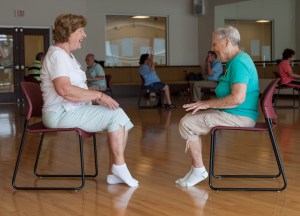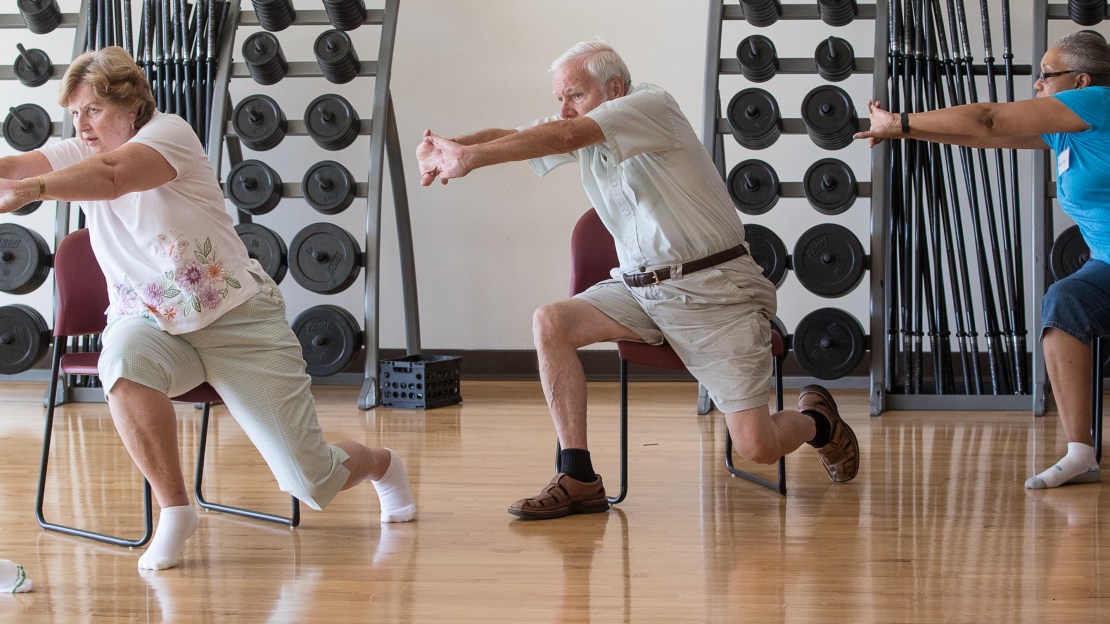Eli Kaberon, April 19, 2019
As a professional dancer, Jeff Friedman performed all over the world, taking the stage in Southeast Asia, Australia and Israel. In the 1980?s, as a member of the Oberlin Dance Collective in San Francisco, Friedman met Pam Quinn, a dance artist. Two decades later, the friends each relocated to the East Coast, as Friedman was hired at the Rutgers University Mason Gross School of the Arts and Quinn worked as a professional dancer in New York.
By that time, Quinn had been diagnosed with Parkinson?s Disease, an illness that impacts one?s mobility and physical freedom – two key aspects for a dancer. Quinn?s timing as a performer had been thrown off, but that did not stop her passion for the art. The diagnosis of his friend piqued Friedman?s interest, and he wondered why more wasn?t being done to help those with the disease.
After speaking with some specialists in Parkinson's, Friedman and Quinn sat on a panel along with Dr. James Tepper, a distinguished professor in neuroscience at Rutgers, to discuss the efficacy of movement exercise for people with Parkinson's. The feedback from the community for the panel was great, and in 2015, the first class of the Rutgers Dance and Parkinson's Program began.

?I have read through this literature to learn how arts-related strategies, especially those strategies that treat the client in a holistic way, have significant effects on the trajectory of their disease progression,? Friedman said ?While I can't say, in any way, that I have become an expert on dance/movement therapy myself, I do see this program as an alternative pathway for dance students to pursue in addition to performance and creative choreography projects.?
The program currently offers two classes per week, which can be highly valuable for those participating. The improvements they feel can last for days. Mixed in with yoga or another type of exercise class, and there is constant attention paid to improving walking, posture and mobility. Friedman said that many of his students also use some of the exercises taught in the class at home, so they can stretch out when they are feeling tight and rigid. The program is supported with funding from The Kenneth Aidekman Family Foundation, the New Jersey Ballet, and the Dance Department, Mason Gross School of the Arts, Rutgers University.
One participant, a professor at Rutgers, told Friedman, "The very idea of holding these classes has been an excellent one, but the execution is even better. The combination of movement and music is delightful, as is the general social atmosphere in the group. The instructors? attitude is always positive, which, particularly given our disability, is always most welcome.? The professor added that since he started attending the class, several people have told him he looks healthier and that he has improved posture and balance.

Leading the program has given Friedman an up-close look at the challenges people with Parkinson?s face every day. He has also seen the impact it has on Rutgers students that study the undergraduate dance curriculum; after participating in the Dance and Parkinson?s program, several students have changed their major to focus on movement and dance therapy or gone on to work in the field.
Quinn runs a similar studio in Brooklyn, the PD Movement Lab, helping people with Parkinson?s face the day-to-day challenges the diseases presents. She continues to be a motivator to her longtime friend.
?She continues to inspire me with her positive attitude and creative approach to generating helpful strategies for coping with the disease,? Friedman said of Quinn. ?I see our clients getting up and out of the house every day to engage their world as a person with Parkinson's Disease; they dig in their gardens and bring fresh greens to class, walk into class bent over in a 90 degree angle and go to the ballet barre to do stretches, roll in on a wheelchair and celebrate their embodied selves by dancing to Doo-Wop music from the '60s and Big Band music from the '40s; they smile, laugh and exit feeling just a bit better for having participated in the Rutgers Dance and Parkinson's Program.?







